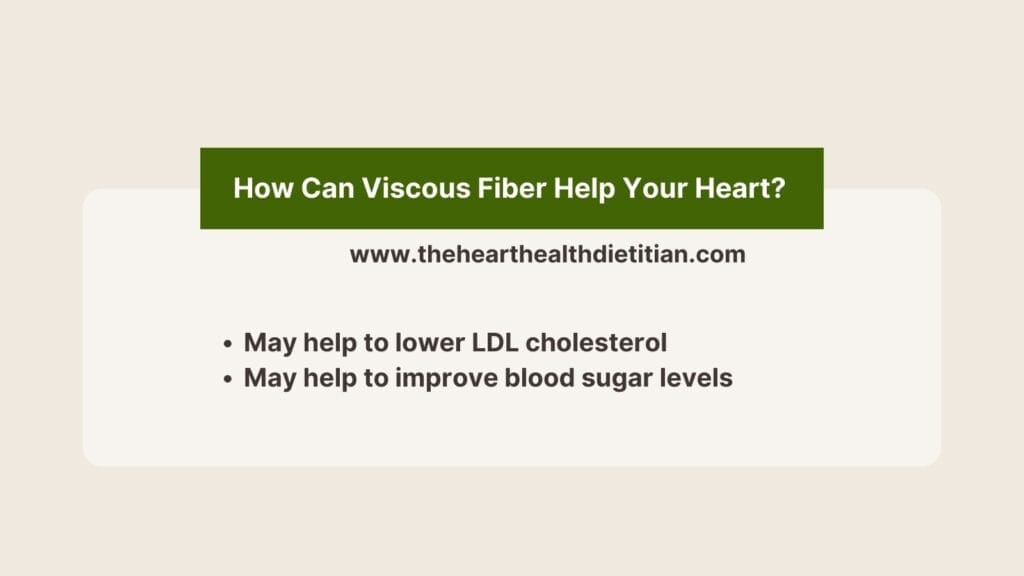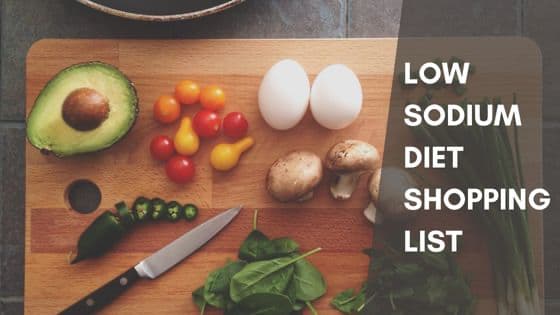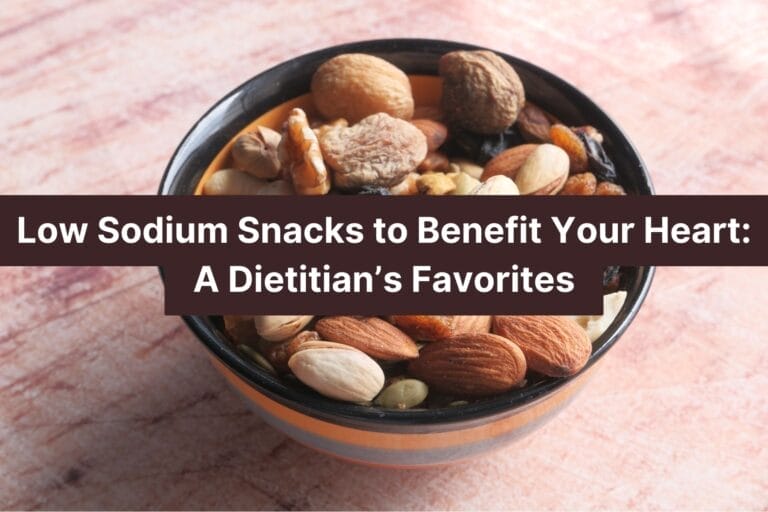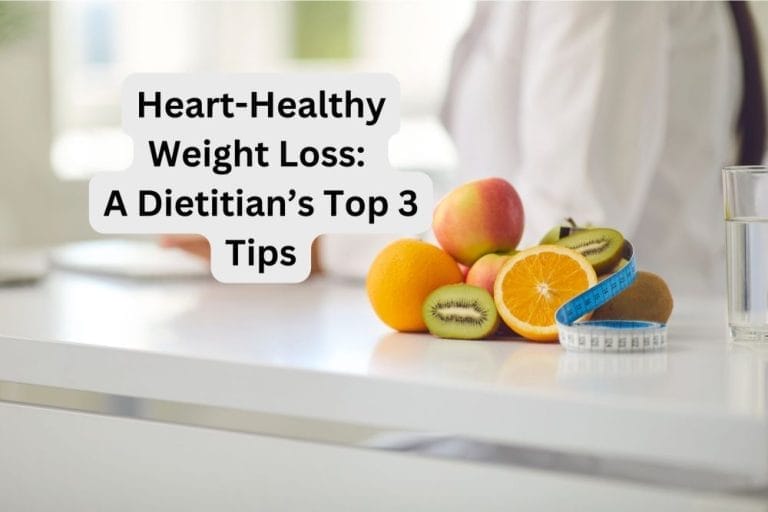Viscous Fiber Foods: How Can They Benefit Your Heart?
This post may contain affiliate links, which means I’ll receive a commission if you purchase through my links, at no extra cost to you. Please read my full disclosure for more information.
If you’re constantly seeing news headlines that seem to put a new spin on nutrition information, you may have come across some that deal with fiber and heart health. Hopefully you’ve noticed that fiber is certainly an important part of a balanced diet. But maybe the details about how fiber can help your heart are a bit unclear.
With so much information out there, it can be overwhelming to try to figure out the truth that’s actually backed by science. In this article, though, my goal is to leave you with a clear picture of how a specific type of fiber, viscous fiber, can especially benefit your heart.
So what is the evidence for viscous fiber foods? Let’s find out!
Quick disclaimer—although I am a registered dietitian nutritionist, your reading of this or any articles on this website does not constitute medical nutrition therapy advice nor create a practitioner-client relationship. The information I provide here on this website is for educational and informational purposes only. Please see my full disclaimer for more information.
Types of Fiber
Before we get to the specific details regarding viscous fiber, it would be wise to review some background first. A discussion of fiber and its heart health benefits wouldn’t be complete without an explanation of the different types of fiber. You see, all fiber provides health benefits, but the viscous type of fiber seems to be the most helpful for cardiovascular-related improvements.
That being said, then what are the different types of fiber?
Insoluble Fiber
The first main category of fiber is insoluble fiber. Insoluble fiber could also be called bulk-forming fiber.1 Insoluble fiber is found in certain fruits, vegetables, whole grains, legumes, nuts, and seeds.2
Insoluble fiber’s benefits are more gastrointestinal (GI) tract related. It serves to add some “weight” or “bulk” to our stools to help them move more swiftly through our intestines and be eliminated. Some research suggests that quicker movement of stool through the intestines and out of the body can help to decrease the risk of colon cancer.3
As you can see, insoluble fiber definitely provides some weighty benefits! And unless your healthcare team tells you otherwise, it shouldn’t hurt to add in some sources of insoluble fiber to your day.
(Please note, you may need to consume more water as you increase your fiber intake. Talk to your healthcare professional about how much fiber and water is right for you.)
Some examples of insoluble fiber sources are:
- popcorn (Yes, you’re reading this correctly!)
- whole wheat versions of bread, crackers, pasta, couscous
- brown rice and quinoa
- beans, split peas, lentils, chickpeas
- basically all nuts and seeds
- a majority of vegetables
- apples, pears, berries, and avocados
Quick tip: On some labels, the fiber may be broken down further into soluble and insoluble fiber subcategories underneath the dietary fiber line. That isn’t always the case, but it doesn’t hurt to look for it if you’re curious about a specific food.

Soluble Fiber
Now that we’ve discussed insoluble, or bulking fiber, let’s move on to the second main type of fiber—soluble fiber. This may get a little tricky, but bear with me. Soluble fiber itself comes in 2 different types: fermentable fiber and viscous fiber.
This is where it starts to get even more interesting! We’ll begin with fermentable fiber, and then we’ll dive into the topic of viscous fiber that this article is really focused on.
Fermentable Fiber
Fermentable fiber is a type of soluble fiber that is also very much focused on GI health. While it doesn’t necessarily move things through the intestines quickly, it does serve as a food source for the gut bacteria that live in our intestines.3 You may have also heard it called “prebiotic fiber.”
In recent years fermentable fiber has become quite a hot topic. Although this article’s focus is not on fermentable fiber, the following foods are good sources of it:
- oat bran and oats
- barley
- cereals and grain bars or other products with chicory root or inulin added
- lentils, split peas, kidney beans, chickpeas
- asparagus, onions, artichokes
- unripe bananas
A side note—you may have noticed some of the foods in this list are also on the insoluble/bulking fiber list. A fun reality in the world of fiber is that many foods contain more than one type of fiber. So by eating some of the foods listed in these past 2 sections, you’re getting double the benefit!
Viscous Fiber
Now we’ll finally move on to the type of fiber this article is focused on—viscous fiber. Viscous fiber’s role in the intestines is to form a “gel.” As a gel, viscous fiber binds different substances in your intestines, such as cholesterol. It then helps to transfer these substances out of the body via your stool.3
Good sources of viscous fiber are:
- oat bran and oats
- barley and whole grain rye products
- cereals or other products with psyllium added
- lentils, split peas, kidney beans, chickpeas
- sweet potatoes, Brussels sprouts, eggplant, artichokes
- apples, pears, berries, avocados, oranges

Viscous Fiber and Your Heart
As we’ve covered the main types of fiber and their roles in the body, let’s now focus on how viscous fiber can benefit your heart. The heart-related benefits come in a few different areas. One of the most notable is our first point below, LDL cholesterol.
LDL Cholesterol
The research we have available so far has demonstrated that viscous fiber can be an important part of decreasing our LDL cholesterol levels. It is possible that consuming the recommended amount of viscous fiber per day (5-10 grams) could help you lower your LDL cholesterol level by 4-10%.4 This means that your LDL level could go down by up to 10 points!4
Keep in mind, though, that everyone is different. In some cases, people who have a higher LDL cholesterol level to start with may be the ones seeing a larger decrease in their numbers.5 But even so, every little bit counts. The longer you can keep your LDL cholesterol level lower, the more you are helping your heart.
Blood Sugar Levels
A second major heart-related benefit for viscous fiber is its effect on blood sugar levels. You may be wondering how blood sugar level changes can benefit your heart. Here’s how.
When your blood sugars are frequently high, they can create a weakening effect on your blood vessels. Weakened, damaged blood vessels are easy target areas for fatty plaque to build up in. Once the fatty buildup occurs, the blood vessels start to harden.6
Hardened blood vessels don’t work as well as they should. Sometimes they can become completely blocked, and someone can have a heart attack.7 So as you can see, high blood sugar levels are not a good thing.
Current research is promising regarding the addition of viscous soluble dietary fiber and its lowering effect on blood sugar level trends.8 So if you’re finding challenges with controlling your blood sugars, it’s possible that adding in some viscous fiber may help.

How to Add Viscous Fiber Foods to Your Day
So now that we’ve discussed how viscous fiber can benefit your lab values and help your heart, how can you include more of it in your day?
Diet
The first step that I and most other dietitian colleagues would recommend is to start adding viscous fiber using a “food first” approach. As you saw in the lists above, several food groups contain foods high in viscous fiber. Pick a group or particular food you like and find a place to add it in during the day.
Here are a few suggestions for different meal and snack times. (Please note that you don’t have to use these suggestions for every meal if you don’t want to; they are just ideas to give you inspiration to start. And remember to include a good source of protein at meals to make sure you’re eating in a balanced way.)
Breakfast
- Oatmeal with berries or apple slices (add a dusting of cinnamon for extra flavor)
- Avocado toast using whole grain rye bread
- Smoothie that includes berries and/or chia seeds
Lunch and/or Dinner
- Chickpeas, kidney beans, or black beans and/or artichoke hearts added to a green salad
- Lentil soup (look for low sodium versions or make your own)
- Roasted sweet potatoes (in olive oil if desired) with grilled chicken or fish and steamed green beans
Snacks
- Chia pudding
- A pear and a handful of unsalted nuts
- Apple slices with peanut butter or other nut butter
Hopefully the above ideas will get you inspired to add in viscous fiber foods in ways you hadn’t thought of before.
Fiber Supplements
The second potential route of including viscous fiber in your day is through a fiber supplement. For some people, it may be hard to consume enough fiber during the day, seeing as recommendations for total fiber intake can range from 21 to 38 grams per day depending on your age and gender.9
And if you’re trying to lower your LDL cholesterol, you may find it difficult to enjoy foods higher in viscous fiber. If these issues are a concern to you, ask your healthcare provider if a fiber supplement is right for you.
If you and your healthcare team decide that a fiber supplement would be the next step to help improve your LDL cholesterol level, you will want to keep a few key points in mind.
First, although you may see plenty of fiber supplements on the market, know that they do not all serve the same purpose. If you’re specifically looking for a viscous fiber supplement, then you will want to look for one of the following ingredients on the label:
- Pectins
- Guar gum (make sure it says “raw”)
- Beta-glucans
- Psyllium
These are known viscous fiber sources. They will be the ones most likely to help you improve your LDL cholesterol level.
Second, realize that there can be potential for a medication-food interaction. If you take fiber supplements too soon after taking medications, your medications may not work as they should. A good rule of thumb is to keep your fiber and medication doses separate by at least 2 hours. That way the fiber will not hinder your medication’s absorption ability.
Third, remember that you may need to increase your water/fluid intake during the day as you add more fiber to your diet. Double check with your healthcare provider as to how much fluid per day is right for you.
Conclusion
As we reach the end of this article, hopefully the heart health benefits of viscous fiber have become clearer to you. And hopefully you have seen some ways you can add viscous fiber into your daily meals and snacks.
If you enjoyed this article, please subscribe to the newsletter for more heart health news and tips. Thank you for reading!
Sources
- Mayo Clinic Staff. Dietary Fiber: Essential for a Healthy Diet. Mayo Clinic website. Updated November 4, 2022. Accessed January 20, 2024. https://www.mayoclinic.org/healthy-lifestyle/nutrition-and-healthy-eating/in-depth/fiber/art-20043983.
- Harvard T.H. Chan School of Public Health. Fiber. Harvard T.H. Chan School of Public Health website. Updated April 2022. Accessed January 20, 2024. https://www.hsph.harvard.edu/nutritionsource/carbohydrates/fiber/.
- Linus Pauling Micronutrient Information Center (Oregon State University). Fiber. Linus Pauling Micronutrient Information Center website. Accessed January 20, 2024. https://lpi.oregonstate.edu/mic/other-nutrients/fiber#improving-regularity-stool-elimination.
- Jacobson TA, Maki KC, Orringer CE. National lipid association recommendations for patient-centered management of dyslipidemia: part 2. J Clin Lipidol. 2015;9(6 Suppl):S1-122. doi: https://doi.org/10.1016/j.jacl.2015.09.002. Accessed January 20, 2024.
- Johnson WM, McKeown. Understanding the physics of functional fibers in the gastrointestinal tract: an evidence-based approach to resolving enduring misconceptions about insoluble and soluble fiber. J Acad Nutr Diet. 2017;117(2): 251-264. doi: https://doi.org/10.1016/j.jand.2016.09.021.
- National Kidney Foundation. Diabetes and Your Eyes, Heart, Nerves, Feet, and Kidneys. National Kidney Foundation website. Updated November 2014. Accessed January 20, 2024. https://www.kidney.org/atoz/content/diabetes-and-your-eyes-heart-nerves-feet-and-kidneys.
- Centers for Disease Control and Prevention. Heart Disease. CDC website. Updated June 20, 2022. Accessed January 20, 2024. https://www.cdc.gov/diabetes/library/features/diabetes-and-heart.html#:~:text=Over+time%2C+high+blood+sugar,and+can+damage+artery+walls.
- Lu K, Yu T, Cao X, et al. Effect of viscous soluble dietary fiber on glucose and lipid metabolism in patients with type 2 diabetes: a systematic review and meta-analysis on randomized clinical trials. Front Nutr. 2023;10:1253312. doi: 10.3389/fnut.2023.1253312. Accessed January 20, 2024.
- McManus KD. Should I Be Eating More Fiber? Harvard Health Publishing: Harvard Medical School website. Published February 27, 2019. Accessed January 20, 2024. https://www.health.harvard.edu/blog/should-i-be-eating-more-fiber-2019022115927#:~:text=On+average%2C+American+adults+eat,and+30+daily+grams%2C+respectively.
About the Author







